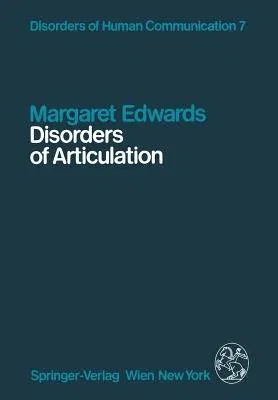Margaret Edwards
(Author)Disorders of Articulation: Aspects of Dysarthria and Verbal Dyspraxia (Softcover Reprint of the Original 1st 1984)Paperback - Softcover Reprint of the Original 1st 1984, 19 January 2012

Qty
1
Turbo
Ships in 2 - 3 days
In Stock
Free Delivery
Cash on Delivery
15 Days
Free Returns
Secure Checkout
Part of Series
Disorders of Human Communication
Print Length
136 pages
Language
English
Publisher
Springer
Date Published
19 Jan 2012
ISBN-10
3709187370
ISBN-13
9783709187371
Description
Product Details
Author:
Book Edition:
Softcover Reprint of the Original 1st 1984
Book Format:
Paperback
Country of Origin:
NL
Date Published:
19 January 2012
Dimensions:
24.41 x
16.99 x
0.81 cm
ISBN-10:
3709187370
ISBN-13:
9783709187371
Language:
English
Location:
Vienna
Pages:
136
Publisher:
Weight:
244.94 gm

